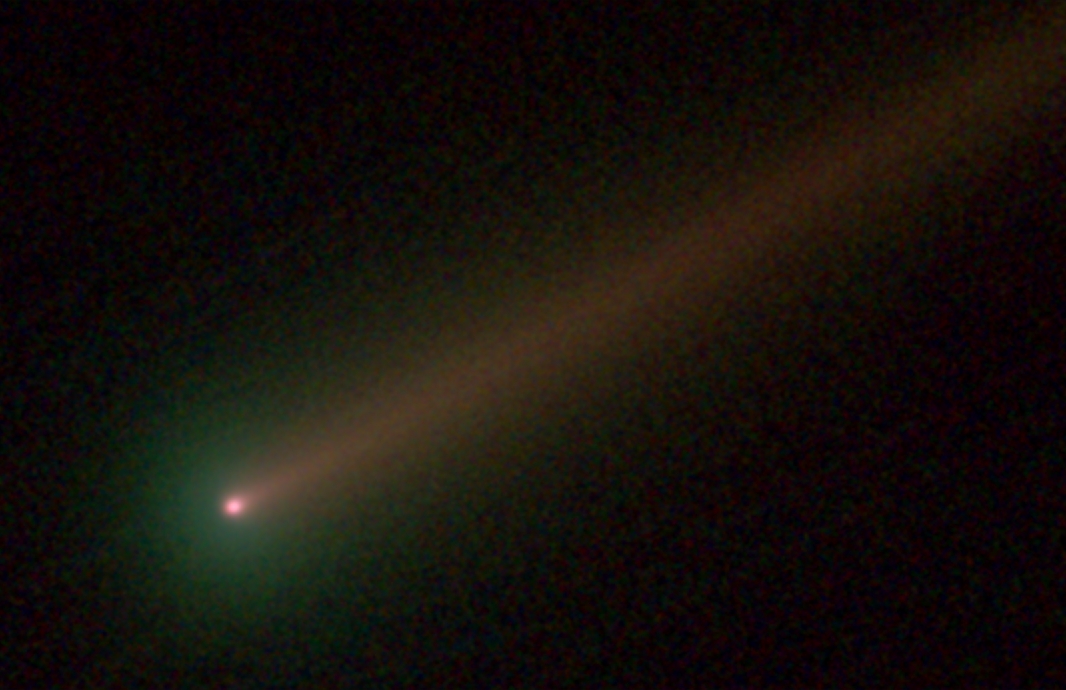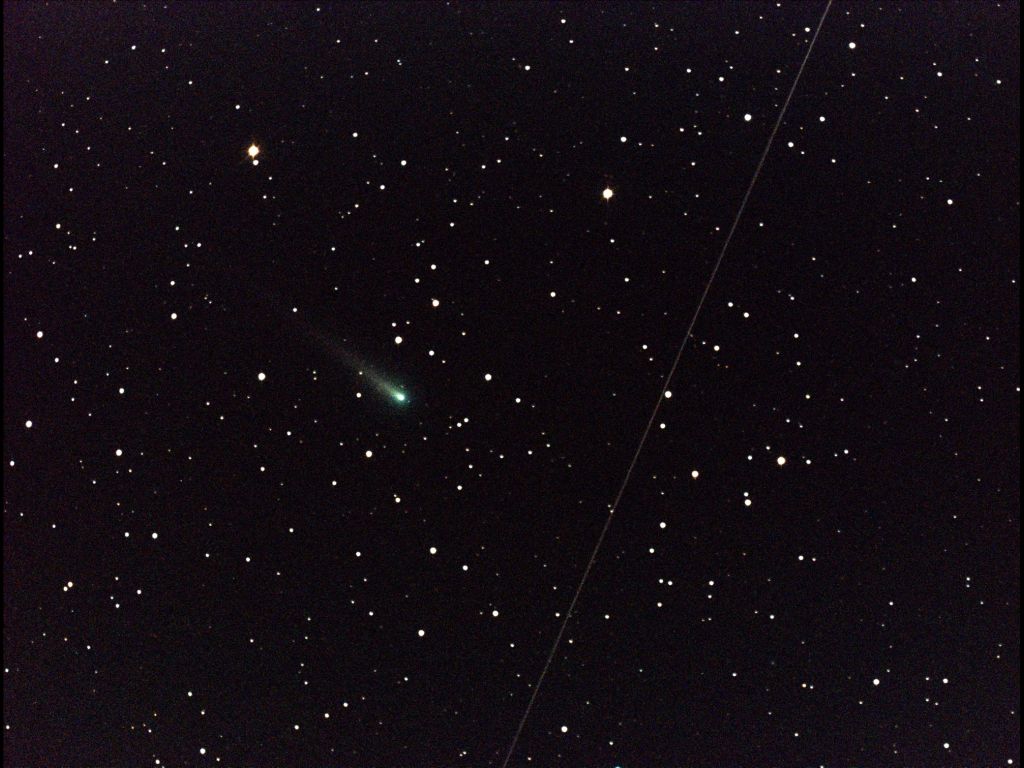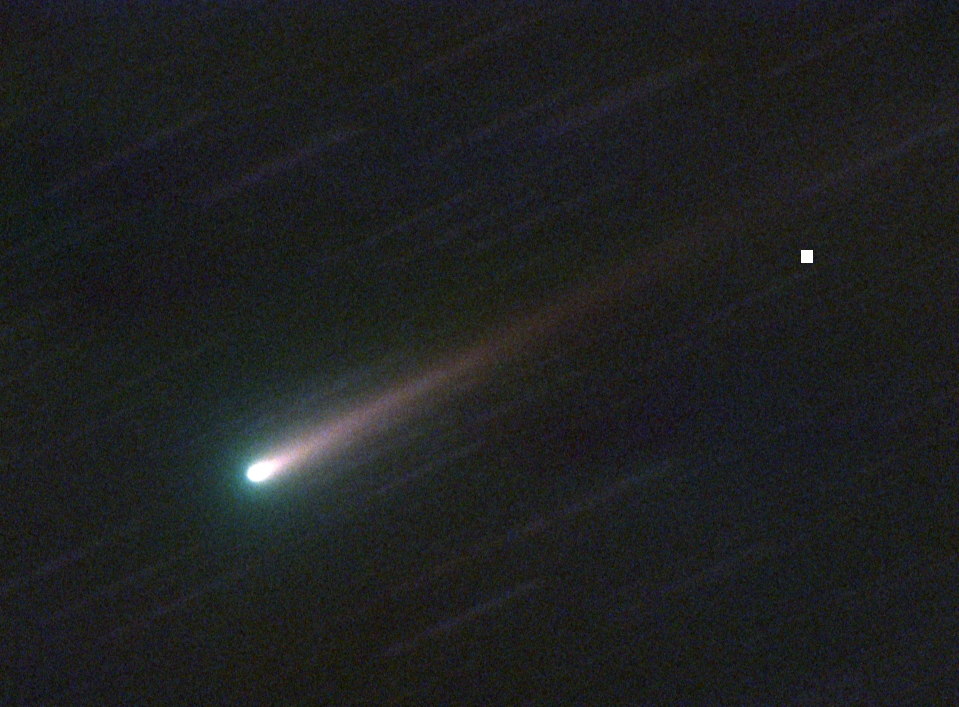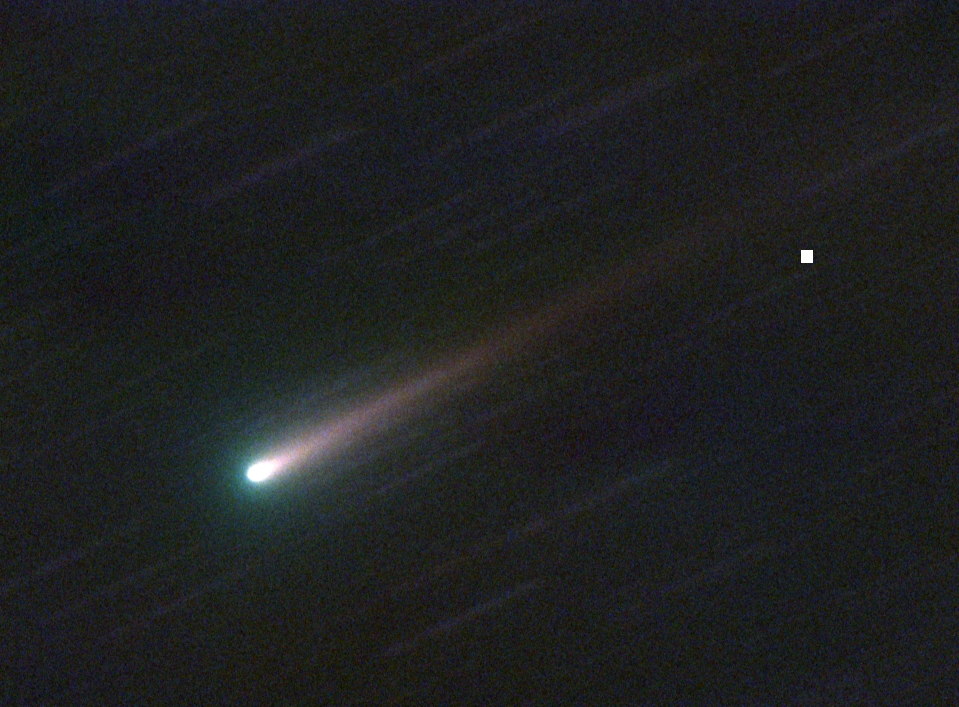
Comet ISON — a potentially dazzling, but so far disappointing, comet — finally appears to be brightening as seen from Earth.
During the last few days, observers worldwide have noticed a noticeable upturn in the overall brightness of Comet ISON as well as a lengthening of its tail. While Comet ISON has remained somewhat dark since coming back into view for skywatchers, the comet might now be on track for a brilliant show when it makes it close pass with the sun at the end of November.
From Asturias, Spain, J.J. Gonzales observed the comet on Wednesday (Nov. 6), and said: "The comet shows a clearly higher degree of condensation in comparison with my previous [observation on] Oct. 31." [Amazing Photos of Comet ISON Taken by Stargazers]

British observer, Denis Buczynski, concurs. "I hope I am not crying wolf here, but I honestly believe that there has been some development of the tail structure of this comet today," Buczynski said. "It will be interesting if other images from telescopes in better locations and conditions show this feature to be real."
"While the activity was stable for about a month (we have started our Monitoring on October 12), the gas production rates have finally increased rapidly the last days! This surge maybe due to an outburst or maybe deeper layer of ices is finally now sublimating," Emmanuel Jehin said. He, C. Opitom, J. Manfroid, and M. Gillon, Liège University have been monitoring ISON since Oct. 12 with the robotic TRAPPIST 0.6-m telescope at ESO La Silla Observatory.
"I do not think the comet is disrupting now, as we do not see any special feature in the coma, shell or large dust production in the last nights," Jehin added. "The coming nights will tell us more about this surge of activity, and maybe the fate of the comet."

Finally brightening
Get the Space.com Newsletter
Breaking space news, the latest updates on rocket launches, skywatching events and more!
Until now, the comet’s brightening trend has, for the most part, maintained a frustratingly slow pace. Arizona amateur astronomer Bruce Gary, the first to photograph ISON after it emerged from out of the glare of the sun on Aug. 12, summarized the situation:
"Wow! I think I speak for many by expressing my frustration with this comet's indifference to the millions of humans who are rooting for it to 'come alive' and put on an impressive show; it's disappointing us all!"
Falling behind?
As of Nov. 1, a consensus of observers worldwide indicated that ISON’s had brightened to magnitude 9.0 — the lower the figure of magnitude, the brighter the object in question.
Generally speaking, the faintest magnitude that the eye can perceive in a clear, dark sky free of any haze or bright lights is 6.5, therefore, ISON was still 2.5 magnitudes (about 10 times too dim) to be seen visually without binoculars or a small telescope. [Comet ISON: 8 Essential and Weird Facts]
Compared to the "official" brightness forecast by the Smithsonian Observatory in Cambridge, Massachusetts, ISON was running at least a full magnitude fainter than forecast.

Noted comet watcher, John Bortle of Stormville, NY, caught ISON through 15x70 binoculars on the morning of Nov. 4 and estimated it at magnitude 8.8. But in his 16.1-inch reflecting telescope at 70-power, Bortle was struck by how unusual the tail appeared.
"Rather than the typical either vague 'fan,' or narrowing 'apple-on-a-stick' aspect that fades rapidly with increasing distance from the comet's head, ISON presented a long, straight tail — not quite a half degree long — with parallel sides that was as wide as the comer’s head. What really stood out to me was that, although faint over its entire length, it was of almost even surface brightness over its length, except toward its very end. I don't think I've ever seen such an appearance in a telescopic comet; truly odd looking," Bortle said.
Bortle has analyzed the comet’s light curve from 24 observations running from Oct. 1 to Nov. 2. His assessment?
"The comet [is] not even performing close to what might be expected for a simple reflecting body," Bortle said of the earlier assessment. "I must admit that the outlook for the comet's future looks rather grim."
Comet Break Up?
Some observers have suggested that ISON will break up into several pieces or even disintegrate.
However, this might not be such a bad thing if it happens around the time the comet is making its closest approach to the sun. At that time, the comet’s 2 to 3-mile-wide (3.2 to 4.8 kilometers) nucleus will be subjected to maximum solar heating and tidal forces.
Comets such Ikeya-Seki in 1965 and West in 1976 put on spectacular shows due in part to the breakups of their nuclei around the time of perihelion. The end result was a tremendous outpouring of dust into space; both comets unfurled stupendously bright tails that persisted for weeks.
Comet Lovejoy in December 2011 ultimately disintegrated — but not until after it had passed closest to the sun. It too produced a spectacularly bright tail.
On the other hand, if the break-up or disintegration occurs before reaching perihelion, the comet fragments and associated trail of dust could whip around the sun and move back out into space mostly unseen.
Stay tuned to SPACE.com for Comet ISON updates as it continues to race toward the sun.
Joe Rao serves as an instructor and guest lecturer at New York's Hayden Planetarium. He writes about astronomy for Natural History magazine, the Farmer's Almanac and other publications, and he is also an on-camera meteorologist for News 12 Westchester, N.Y. Follow us @Spacedotcom, Facebookand Google+. Original article on SPACE.com.
Join our Space Forums to keep talking space on the latest missions, night sky and more! And if you have a news tip, correction or comment, let us know at: community@space.com.

Joe Rao is Space.com's skywatching columnist, as well as a veteran meteorologist and eclipse chaser who also serves as an instructor and guest lecturer at New York's Hayden Planetarium. He writes about astronomy for Natural History magazine, Sky & Telescope and other publications. Joe is an 8-time Emmy-nominated meteorologist who served the Putnam Valley region of New York for over 21 years. You can find him on Twitter and YouTube tracking lunar and solar eclipses, meteor showers and more. To find out Joe's latest project, visit him on Twitter.









